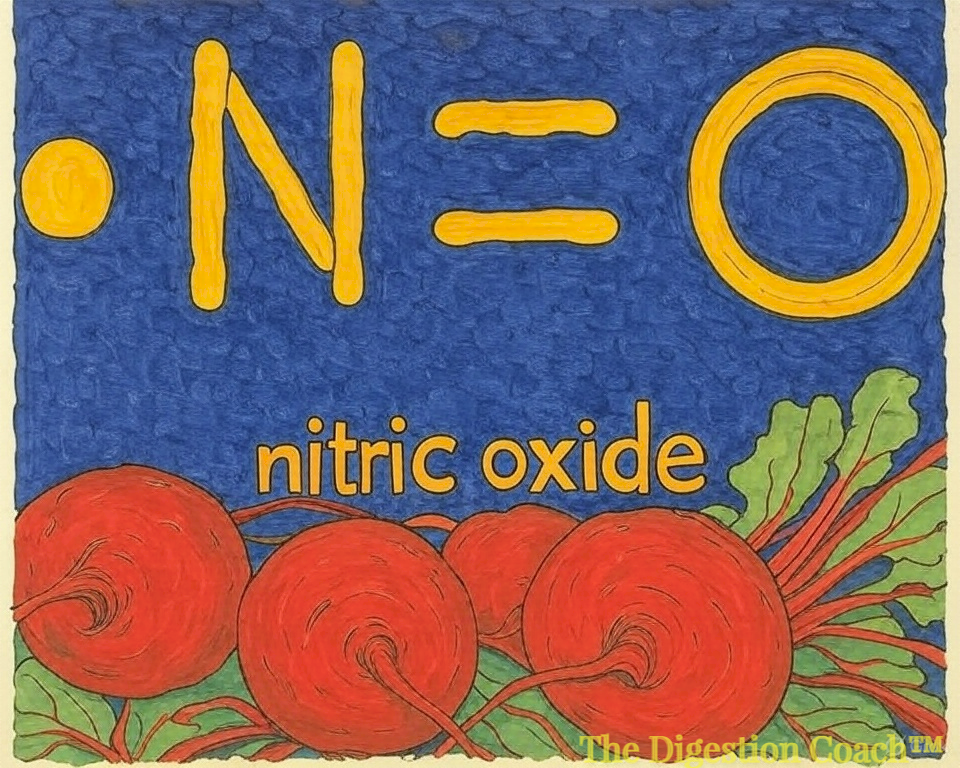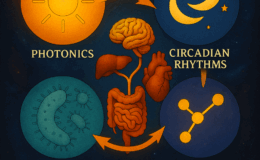Nitric Oxide: A Natural Way to Break Up Biofilms and Fight Infections
Table of Contents
- Introduction
- Nitric Oxide from iNOS (Immune Response)
- Nitric Oxide from eNOS (Blood Flow)
- Sunlight and Nitric Oxide in Skin
- Using Nitric Oxide Donors
- Sunlight and Related Compounds
- A Possible Strategy
Introduction
Biofilms are sticky layers of bacteria that can grow on living tissues, like skin or organs, and non-living surfaces, like medical devices. They cause many infections, such as lung infections (e.g., in cystic fibrosis patients), urinary tract infections, ear infections, heart infections, gum diseases, and wound infections. Biofilms can also form on things like catheters, contact lenses, or artificial joints. Because biofilms are so varied, it’s hard to find one treatment that works for all of them. Antibiotics alone often aren’t enough to get rid of biofilms, so we need new ideas.
This paper explores how Nitric Oxide (NO), a simple gas our body makes, can help break up biofilms. I’ll explain what biofilms are, how NO is involved, and propose a new way to use Nitric Oxide to fight biofilm-related infections. By combining NO with other treatments, we might make antibiotics and natural defenses work better against bacteria.
What Are Biofilms?
Biofilms form when bacteria stick to a surface and build a protective shield. This shield is made of sugars, proteins, and other materials that hold the bacteria together. Over time, the biofilm grows into a complex structure with different types of bacteria working together. At the end of their cycle, some bacteria break free to spread and form new biofilms. This process is called dispersal.
Recent studies show that Nitric Oxide plays a big role in dispersal. It acts like a signal that tells bacteria to leave the biofilm. This happens in many types of bacteria, like those causing staph infections, E. coli, or lung infections. Based on this, I suggest using NO to break up biofilms and make bacteria easier to kill. While this idea hasn’t been fully tested, it could lead to new ways to treat infections.
Nitric Oxide from iNOS (Immune Response)
Overview: When the body faces threats like bacteria, sunlight, or inflammation, it makes more of an enzyme called inducible nitric oxide synthase (iNOS). This enzyme creates Nitric Oxide, which helps control inflammation and fights infections.
Inside biofilms, NO is made naturally to help bacteria break free and move around on their own (called a planktonic state). If there’s not enough NO, the bacteria stay stuck in the biofilm, making infections harder to treat. But when Nitric Oxide is present—either made by the body or added through special compounds—it helps break up the biofilm. This makes bacteria more vulnerable to antibiotics and other treatments.
For example, in cystic fibrosis patients, the body struggles to make enough Nitric Oxide to fight lung infections caused by bacteria like Pseudomonas aeruginosa. This leads to chronic infections because antibiotics don’t work as well against biofilms. Increasing NO could help clear these infections.
The iNOS enzyme makes Nitric Oxide by turning an amino acid called arginine into NO. This happens in immune cells like macrophages when they detect bacteria or inflammation signals. If iNOS doesn’t work properly, infections and diseases like colitis or arthritis can get worse. Interestingly, some bacteria, like Helicobacter pylori, block NO production to survive longer in the body.
Nitric Oxide from eNOS (Blood Flow)
Overview: Blood flow creates a force called shear stress on blood vessel walls. This force signals an enzyme called endothelial nitric oxide synthase (eNOS) to make Nitric Oxide. NO helps control blood pressure and blood flow and keeps blood vessels healthy.
The eNOS enzyme is found in the cells lining blood vessels. When blood flows faster—like during exercise or when blood pressure changes—it creates more shear stress. This tells eNOS to produce more NO. The NO then helps blood vessels relax, improves blood flow, prevents blood clots, and keeps the heart and vessels balanced. Dietary Inorganic Nitrate Improves Mitochondrial Efficiency in Humans
Sunlight and Nitric Oxide in Skin
Overview: Sunlight, especially ultraviolet (UV) light, triggers Nitric Oxide production in the skin without using enzymes like iNOS or eNOS. It does this through chemical reactions with nitrogen-containing compounds.
NO doesn’t last long in the body, but the skin stores stable compounds like nitrate and nitrite. These can turn into Nitric Oxide when exposed to UV light from the sun (both UVA and UVB rays). This happens in skin cells like keratinocytes and blood vessel cells. The NO can relax nearby blood vessels, improve blood flow, or even travel through the bloodstream to other parts of the body.
To make this work, the body needs enough building blocks like arginine and citrulline (amino acids). Compounds like nitrate, nitrite, and nitrosothiols also play a role. This process is different from how NO is made in blood vessels or during infections.
Using Nitric Oxide Donors
One way to use Nitric Oxide against biofilms is to deliver it using “donor” molecules. These are compounds that release NO inside the body. They can work on their own, with enzymes, or when triggered by things like UV light, exercise, or changes in acidity.
For example, studies with cystic fibrosis patients showed that inhaling L-arginine (an amino acid) increased NO in the lungs. This improved lung function and helped fight bacterial infections. Nitric Oxide alone doesn’t kill bacteria, but it makes them leave the biofilm, so antibiotics and natural defenses work better.
Other compounds can help, too. L-glutamine, another amino acid, boosts Nitric Oxide when arginine is low. It also helps wounds heal and reduces inflammation. Foods like beets or arugula, which contain nitrate, can increase NO through a different pathway. This pathway works better in low-oxygen or acidic conditions, unlike the enzyme-based systems.
Sunlight and Related Compounds
Sunlight does more than just make Nitric Oxide. It also boosts other defenses, like vitamin D and melanin (the pigment in skin). These help fight infections and keep the skin healthy.
UVB Light
UVB rays from sunlight increase vitamin D, which helps make antimicrobial peptides (small proteins that attack bacteria, viruses, and fungi). One peptide, called LL-37, strengthens the skin’s barrier, helps heal wounds, and fights infections. Getting enough sunlight to keep vitamin D levels high (around 50 ng/ml) is key. Studies show that low vitamin D raises the risk of diseases like multiple sclerosis.
Vitamin D’s Role
Vitamin D activates many defenses. It helps produce:
- Defensins: Proteins that destroy bacteria by breaking their cell walls.
- NOD-like and Toll-like receptors: Sensors that detect germs and start immune responses.
- Interferons: Proteins that fight viruses and other germs.
- Phagocytes and autophagy: Cells and processes that eat or destroy germs.
- Cytokines: Signals that control inflammation and immune responses.
Together, these defenses, along with NO, help stop biofilms and infections.
A Possible Strategy
Nitric Oxide’s ability to break up biofilms opens the door to new treatments. Our modern lifestyle—less exercise, poor diet, and not enough sunlight—might be making infections harder to treat. Going back to natural methods could help.
Here’s a plan to boost Nitric Oxide and fight biofilms:
- Diet: Eat foods that support NO, like L-glutamine, L-arginine, L-citrulline, beets, and arugula. These provide the building blocks for Nitric Oxide.
- Exercise: Do aerobic and anaerobic exercises (like running or weightlifting). These increase blood flow and shear stress, which boost NO through eNOS. Anaerobic exercise also creates low-oxygen conditions that favor Nitric Oxide production.
- Sunlight: Get regular UV exposure from the sun. This increases NO in the skin and boosts vitamin D and other defenses.
This natural approach could make antibiotics and other treatments work better. While it might not replace drugs in every case, it can make them more effective, like adding fuel to a fire.
The future of fighting chronic infections looks promising with Nitric Oxide as a key player.










